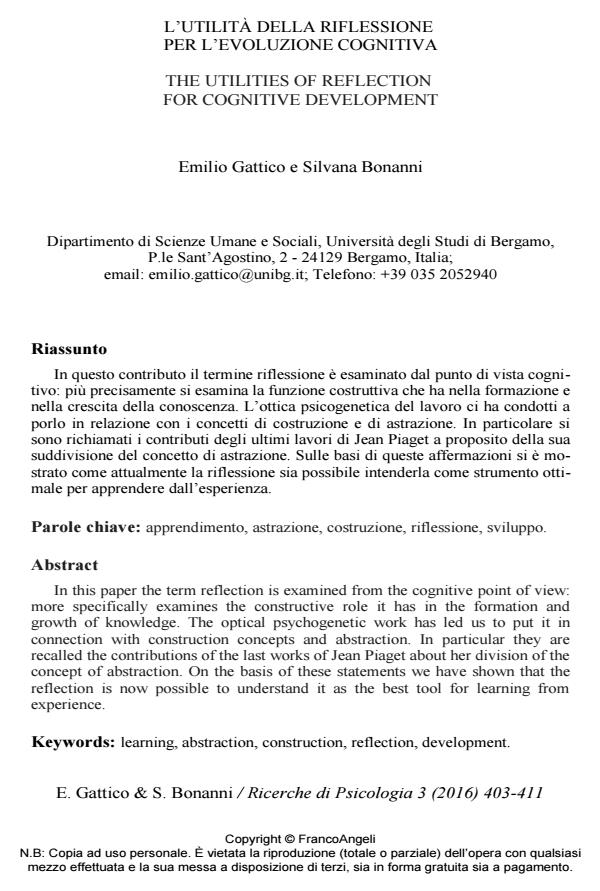The utilities of reflection for cognitive development
Journal title RICERCHE DI PSICOLOGIA
Author/s Emilio Gattico, Silvana Bonanni
Publishing Year 2016 Issue 2016/3 Language Italian
Pages 9 P. 403-411 File size 167 KB
DOI 10.3280/RIP2016-003009
DOI is like a bar code for intellectual property: to have more infomation
click here
Below, you can see the article first page
If you want to buy this article in PDF format, you can do it, following the instructions to buy download credits

FrancoAngeli is member of Publishers International Linking Association, Inc (PILA), a not-for-profit association which run the CrossRef service enabling links to and from online scholarly content.
In this paper the term reflection is examined from the cognitive point of view: more specifically examines the constructive role it has in the formation and growth of knowledge. The optical psychogenetic work has led us to put it in connection with construction concepts and abstraction. In particular they are recalled the contributions of the last works of Jean Piaget about her division of the concept of abstraction. On the basis of these statements we have shown that the reflection is now possible to understand it as the best tool for learning from experience.
Keywords: Learning, abstraction, construction, reflection, development
- Chizuko, I., Nobuo, O.H. (Eds.) (2013), Human Learning and Memory: Advances in Theory and Applications. Mahwah: Lawrence Erlbaum Associates.
- Gattico, E. (2016). Una lettura piagetiana dei concetti di astrazione e riflessione. Nuova secondaria, in press.
- Kolb, D.A. (1984). Experiential Learning: Experience as the source of learning and development. Prentice-Hall.
- Marton F., & Booth S. (1997). Learning and Awareness. Mahwah: Lawrence Erlbaum
- Associates. Piaget, J., et al. (1977). Recherches sur l’abstraction reflechissante. Paris: Presses Universitaires de France.
Emilio Gattico, Silvana Bonanni, L’utilita della riflessione per l’evoluzione cognitiva in "RICERCHE DI PSICOLOGIA " 3/2016, pp 403-411, DOI: 10.3280/RIP2016-003009